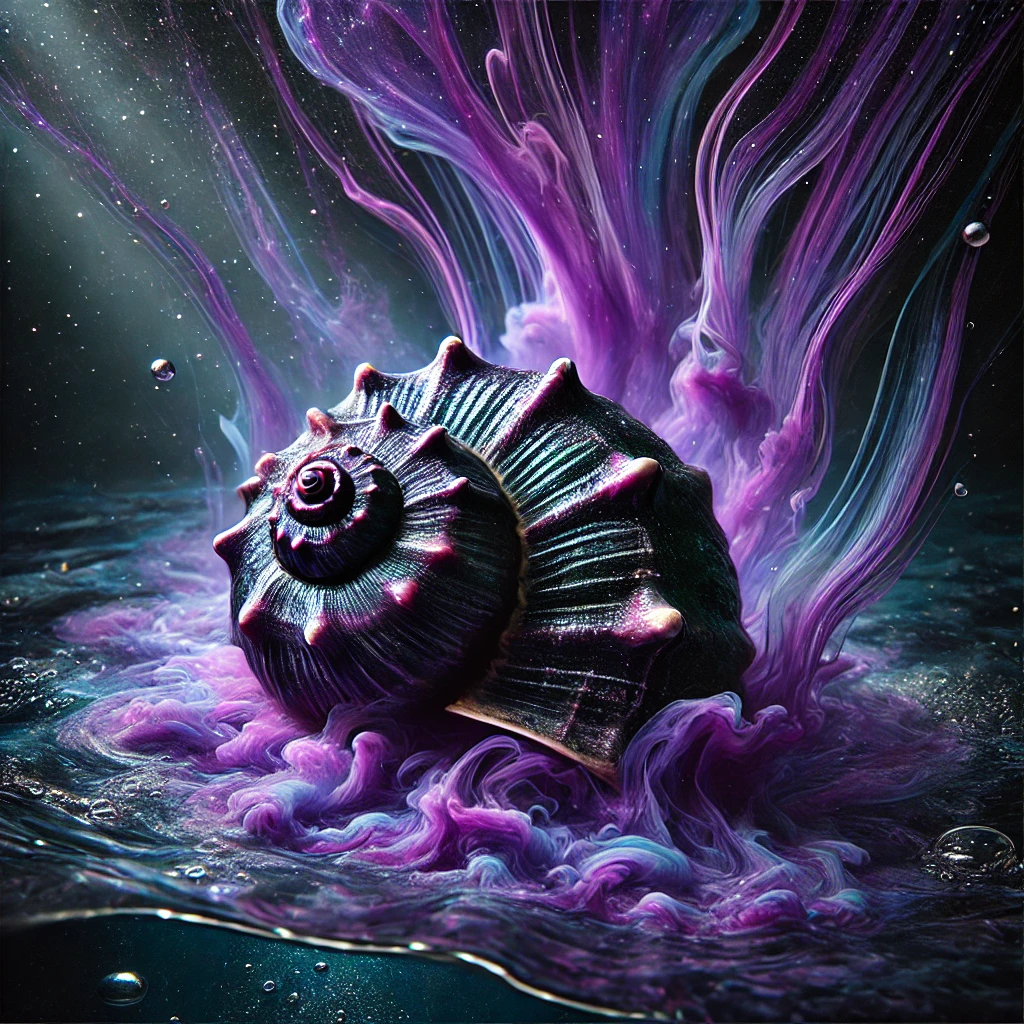You ever look at something totally ordinary and suddenly realize there’s this whole universe of wild history behind it? That’s purple for you. Not the synthetic stuff we see everywhere today, but the OG purple – the kind that literally made emperors go “weird flex, but okay” thousands of years ago. Welcome to the trippy tale of how some tiny snails accidentally created one of history’s most intense flexes.
The Cosmic Color Conspiracy (Your Mind = Blown)
Picture this: you’re an ancient Phoenician, just vibing on the beach, when you notice some snails making this wild color that looks like a sunset had a baby with the depths of space. That’s literally how humanity discovered Tyrian purple, and it changed the game forever. But here’s where it gets wild – these snails, the Murex bros, were basically nature’s most inefficient color factory. You needed like 12,000 of these little dudes to make just 1.5 grams of pure purple dye. That’s enough for exactly one royal flex (aka a small piece of fabric).
The true price of purple was astronomical. We’re talking more valuable than gold, more precious than pearls. Imagine dropping the equivalent of a modern house payment on a single purple hoodie – that’s the kind of flex we’re dealing with. But unlike modern luxury goods, this wasn’t just marketing hype. The process of making purple dye was like the ancient world’s version of artisanal small-batch crafting, except way more intense.
Power Threads and Royal Swagger: When Your Fit Could Get You Executed
Here’s where the purple saga gets even more wild. Roman emperors were so protective of their purple drip that they straight up made it illegal for regular folks to wear it. We’re not talking about some gentle suggestion here – we’re talking full-on “wear purple, get dead” level consequences. The color became so synonymous with power that the phrase “born to the purple” meant you were literally born in a special purple room of the palace. Talk about starting life with a color-coordinated flex.
But check this out – the chemistry behind Tyrian purple is actually mind-blowing. The snails produce this clear liquid that, when exposed to air and sunlight, goes through this whole metamorphosis through greens and blues before finally settling into that iconic purple. It’s like nature’s own lava lamp show, but with more imperial consequences.
The Color Economics of Exclusivity: Ancient Hype Beast Energy
Let’s get real about the economics of this whole situation. One pound of Tyrian purple-dyed fabric cost more than most people would see in their entire lifetime. We’re talking about the equivalent of modern-day $20,000 per gram. To put that in perspective, gold currently costs about $60 per gram. This means purple dye was literally worth more than 330 times its weight in gold.
The Phoenicians, who discovered this whole purple situation around 1570 BCE, basically ran the ancient world’s most exclusive dropshop. They kept their production methods secret, created artificial scarcity, and basically invented the concept of luxury branding. If that’s not ancient hype beast energy, I don’t know what is.
The Ultimate Plot Twist: Nature’s Most Extra Color Factory
But here’s the real mind-bender – the process of making this purple dye was absolutely wild. The snails had to be harvested alive, the liquid had to be processed immediately, and the whole thing smelled so bad that purple-making facilities had to be located far from cities. Imagine the most exclusive product in the world being made in what was essentially the ancient equivalent of a smelly warehouse at the edge of town.
The dye-making process was also weirdly specific. The liquid had to be exposed to sunlight, but not too much sunlight. The temperature had to be just right. The whole thing was like brewing the world’s most expensive and complicated kombucha, except the end result was worth more than your house.
Whoa Moment: The Purple Paradigm Shift
Here’s your brain-melting takeaway: purple wasn’t just a color – it was humanity’s first experiment with artificial scarcity and social signaling. Before cryptocurrency, before limited edition sneakers, before blue checkmarks, there was purple. It was a color that literally represented power, not because of any inherent properties, but because humans collectively agreed it did.
And that’s the real trip – we’re still doing the same thing today, just with different status symbols. Whether it’s rare NFTs or designer logos, we’re still playing the same game those ancient purple-wearing emperors were playing. The only difference is, now we can make purple for basically free, which would probably blow their ancient minds.
